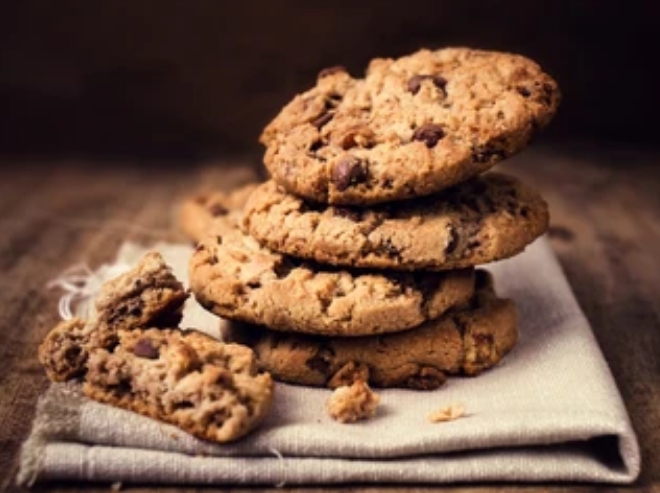In the enchanting realm of baking, where artistry meets science, there lies an irresistible magic that dances its way through kitchens, tantalizing taste buds and igniting joy with every delightful bite. Embarking on a journey to master the craft of creating mouthwatering cookie recipes is akin to stepping into a world where flour and sugar transform into delectable treats that warm the heart and soul. Today, dear readers, we invite you to join us on this delectable adventure as we unravel the secrets behind crafting the most divine cookies that will have your loved ones begging for more.
As we dive into the sweet symphony of flavors and textures that define the perfect cookie, we will unveil a step-by-step guide that demystifies the art of baking and empowers you to create confectionery wonders in the comfort of your own kitchen. From the delicate balance of ingredients to the precise dance of mixing and shaping, each stage of this culinary expedition will bring you closer to becoming a maestro of cookie recipes. So, grab your apron, dust off your mixing bowls, and let’s embark together on a delectable odyssey filled with sugary delights and aromatic wonders that will elevate your baking prowess to new heights.
The Essential Ingredients for Cookie Perfection
When it comes to crafting the perfect cookie, every ingredient plays a crucial role in achieving that mouthwatering taste and texture. Let’s take a closer look at the essential ingredients that will elevate your cookie recipes to new heights.
First and foremost, let’s talk about flour. Choosing the right type of flour is essential for achieving the desired texture in your cookies. All-purpose flour is a popular choice as it strikes a balance between protein content and gluten development. However, if you prefer a chewier texture, you can opt for bread flour, which has a higher protein content. On the other hand, cake flour will give your cookies a lighter and more delicate crumb.
Sugar is another key player in creating irresistible cookies. Not only does it add sweetness, but it also contributes to moisture retention and browning during baking. Granulated sugar is commonly used in cookie recipes for its ability to provide structure and crispness. Brown sugar, with its molasses content, adds moisture and lends a soft and chewy texture to your cookies.
Of course, we cannot forget about the magic of butter. Butter not only adds richness but also contributes to the flavor and texture of your cookies. When choosing butter for your recipes, opt for unsalted butter as it allows you to control the salt content in your cookies better. The temperature of the butter also plays a vital role – softened butter creates tender cookies while melted butter results in thinner and crisper ones.
Understanding the Science Behind Baking
Baking is not just an art; it’s also a science. Understanding some key scientific principles will help you achieve consistent results with your cookie recipes.
One important concept is leavening agents – substances that help cookies rise during baking. Baking powder and baking soda are commonly used leavening agents in cookie recipes. Baking powder is a combination of an acid and a base, which creates carbon dioxide gas when activated by moisture and heat. Baking soda, on the other hand, requires an acidic ingredient such as brown sugar or buttermilk to create the same reaction.
Another scientific aspect to consider is the role of eggs. Eggs provide structure, moisture, and richness to your cookies. The proteins in eggs coagulate during baking, giving your cookies their structure. Additionally, the fat in egg yolks contributes to the richness and tenderness of your cookies.
Choosing the Right Flour: A Crucial Decision
When it comes to selecting flour for your cookie recipes, it’s important to understand how different types of flour can affect the final outcome.
All-purpose flour is a versatile option that works well for most cookie recipes. It has a moderate protein content that provides structure without making the cookies too dense or chewy. If you prefer a softer texture, you can use cake flour, which has less protein and produces lighter cookies.
If you’re aiming for chewier cookies with a denser texture, bread flour is an excellent choice. It has a higher protein content than all-purpose flour and creates more gluten during mixing. This results in cookies with a chewy bite.
Whole wheat flour is another option for those looking for a healthier twist on their cookie recipes. It adds nuttiness and fiber but can make the cookies denser due to its higher protein content.
Deciphering the Sweetness: The Role of Sugar in Cookies
Sugar not only adds sweetness but also plays several important roles in creating delicious cookies.
Granulated sugar is commonly used in cookie recipes as it provides structure and contributes to the crispness of the cookies. It also aids in browning during baking, resulting in a golden exterior.
Brown sugar, with its molasses content, adds moisture to the cookies and lends a soft and chewy texture. The molasses also adds a subtle depth of flavor that enhances the overall taste.
Powdered sugar, also known as confectioners’ sugar, is often used in recipes that require a tender and delicate texture. It dissolves easily and helps create a melt-in-your-mouth experience.
The Magic of Butter: Finding the Perfect Balance
Butter is one of the star ingredients in cookie recipes, providing flavor, richness, and texture.
When selecting butter for your cookies, it’s best to use unsalted butter. This allows you to control the salt content more precisely. If you only have salted butter on hand, you can reduce or omit any additional salt called for in the recipe.
The temperature of the butter also plays a crucial role in achieving the desired texture. Softened butter is typically used in most cookie recipes as it creams well with sugar and creates tender cookies. However, melted butter can result in thinner and crisper cookies.
Exploring Flavor Enhancements: From Vanilla to Citrus Zest
While classic chocolate chip cookies are always a crowd-pleaser, adding flavor enhancements can take your cookie recipes to new heights.
Vanilla extract is a staple flavoring agent that complements almost any type of cookie. Its warm and sweet aroma adds depth to your baked goods.
Citrus zest, such as lemon or orange zest, adds brightness and freshness to your cookies. It pairs well with flavors like white chocolate or coconut.
Other flavorings like almond extract, cinnamon, or even espresso powder can add a unique twist to your cookie recipes. Don’t be afraid to experiment and discover new flavor combinations!
The Art of Mixing: Incorporating Ingredients with Precision
Mixing the ingredients properly is crucial for achieving the perfect texture in your cookies.
Start by creaming together the butter and sugars until light and fluffy. This step incorporates air into the mixture, resulting in a softer texture.
Next, add the eggs one at a time, ensuring each egg is fully incorporated before adding the next. This prevents overmixing and ensures an even distribution of ingredients.
When adding dry ingredients like flour, baking powder, and salt, it’s important not to overmix. Overmixing can lead to tough cookies due to excessive gluten development.
If your recipe calls for mix-ins like chocolate chips or nuts, fold them in gently to avoid crushing or breaking them apart.
Shaping Your Creations: From Classic Rounds to Creative Designs
The way you shape your cookie dough can influence both its appearance and texture.
For classic round cookies, use a cookie scoop or tablespoon to portion out the dough onto a baking sheet. Leave enough space between each cookie for spreading during baking.
If you prefer thinner and crispier cookies, flatten the dough slightly with the palm of your hand before baking.
To create more decorative shapes or designs, you can roll out the dough on a lightly floured surface and use cookie cutters. This works well for holiday-themed cookies or special occasions.
Baking to Perfection: Tips for Achieving the Ideal Texture and Color
Baking cookies is all about finding that sweet spot where they are perfectly cooked – not underdone or overdone.
One important tip is to preheat your oven. This ensures that the cookies bake evenly and achieve the desired texture.
Another key factor is the baking time. Keep a close eye on your cookies and remove them from the oven when they are lightly golden around the edges. They may appear slightly undercooked in the center, but they will continue to firm up as they cool.
The type of baking sheet you use can also affect the outcome. A light-colored baking sheet will result in lighter cookies, while a dark-colored one may lead to darker and crisper cookies.
The Final Touch: Decorating and Presenting Your Masterpieces
Once your cookies have cooled, it’s time to add some finishing touches and present them beautifully.
You can drizzle melted chocolate over your cookies or sprinkle them with powdered sugar for an elegant touch.
If you’re feeling artistic, use icing or frosting to create intricate designs or patterns on your cookies. This works especially well for holiday-themed treats.
Finally, arrange your masterpieces on a platter or in a decorative tin for gifting or serving. A beautiful presentation adds that extra touch of love and care to your homemade cookie creations.
Now that you have unlocked the secrets behind crafting mouthwatering cookie recipes, it’s time to put your newfound knowledge into practice. Grab your apron, gather your ingredients, and let the aroma of freshly baked cookies fill your kitchen as you embark on this delectable journey of sweet delights!


